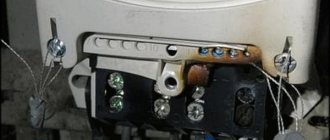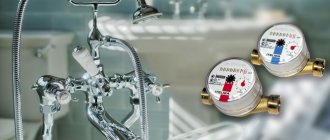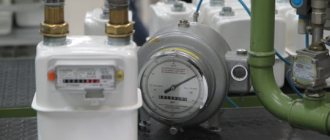Types of electricity metering devices
The operation of any counter consists of the interaction of several elements: input and output contacts, internal circuit
The operating principle of any meter is the interaction of several elements: input and output contacts, internal circuitry (mechanical, electronic). Depending on the network used, devices that switch with AC or DC circuits are distinguished. The former are more widespread and are divided into the following types:
- induction (used for over 150 years);
- electronic (modern metering devices);
- hybrid (combine the functions of the previous two types).
New connections are made using electronic devices. Experts also recommend replacing old induction options with more modern devices.
General requirements for meters
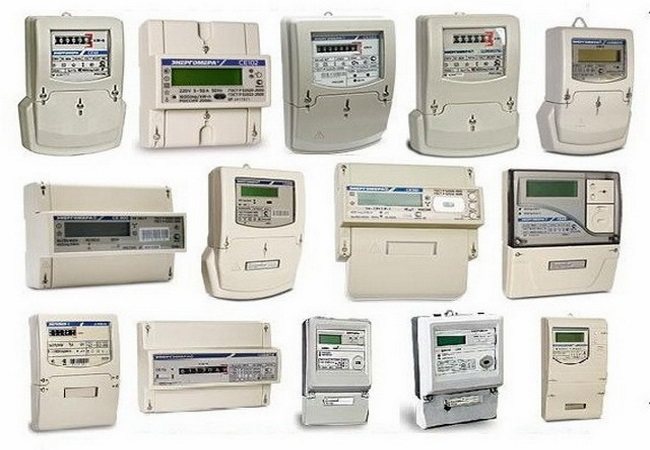
The device must comply with the register of those approved for installation on the territory of the Russian Federation
Any of the specified types of electrical metering devices must meet several mandatory requirements:
- compliance with the register - a list of imported and domestic brands of manufacturers that have passed certification, certification and are approved for installation on the territory of the Russian Federation;
- registration after putting into operation a new device or upgrading an old one (any changes, internal or external, are considered), it is important to check the correspondence of the device readings and the data recorded in the report;
- installation height – no more than 1.7 meters from the floor level;
- the corresponding service life of the electricity meter in the apartment.
If the device does not pass the test on at least one of the points, its readings are not taken into account. Penalties may be imposed. This is especially true for large industrial facilities with significant levels of light consumption.
The procedure for putting the IPU into operation.
From the newly introduced points in the New Rules it follows that the procedure for putting the IPU into operation can be divided into three stages.
The first stage is checking the IPU and documents for it.
verification of the IPU and documents for it (clause 81.4), namely verification of:
- correspondence of the serial number on the meter to the number indicated in its passport;
- compliance of the meter with the technical documentation of its manufacturer, including the configuration and installation diagram of the metering device;
- presence of signs of the latest verification (with the exception of new metering devices);
- performance of the IPU.
If inconsistencies are identified, the contractor does not put the metering device into operation (clause 81.5 of the New Rules). The regulatory document establishes the procedure for registering this fact by drawing up a document, which in clause 81.6 of the New Rules is called a commissioning act. But, obviously, it is appropriate to call it an act of refusal to put the IPU into operation. It must reflect the following details:
- date, time and address of verification of the installed IPU;
- Full name, positions and contact details of persons who took part in the inspection;
- the type and serial number of the installed metering device, as well as the location of its installation;
- decision to refuse to put the meter into operation, indicating the grounds for such refusal.
The document is drawn up in two copies and signed by the consumer and representatives of the contractor. Taking into account clause 81.2 of the New Rules, drawing up such an act is in the interests of the contractor: you need to have a document signed by the consumer stating that at the agreed time the management company employee arrived at the consumer, but reasonably did not put the IPU into operation (to avoid accusations of ignoring the consumer’s application).
The second stage is the installation of control seals.
At the second stage, the contractor’s representative installs control disposable number seals on the IPU (in the absence of grounds for refusing to put the IPU into operation) (clause 81.8 of the New Rules). This refers to seals at the point where the IPU is connected to the in-house utility networks and in-apartment equipment.
The third stage is the act of putting the IPU into operation.
The third stage is the execution of the act of putting the IPU into operation. The act indicates (clause 81.6 of the New Rules):
- date, time and address of putting the meter into operation;
- Full name, positions and contact details of persons who took part in the procedure for putting the meter into operation;
- the type and serial number of the installed metering device, as well as the location of its installation;
- decision to put the IPU into operation;
- readings of the metering device at the time of completion of the procedure for its commissioning and an indication of the places on the metering device where control disposable number seals (control seals) are installed;
- date of next verification.
The act of putting the meter into operation is drawn up in two copies and signed by the consumer and representatives of the contractor who took part in the procedure for putting the meter into operation (clause 81.7 of the New Rules).
According to clause 81.9 of the New Rules, the commissioning of metering devices in the cases provided for by these rules is carried out by the contractor without charging a fee.
Since the installation of seals on the IPU is carried out immediately before the execution of the act of putting the meter into operation, the seals are installed free of charge.
There is a special rule about this in clause 81.14 of the New Rules: the installed metering device, including after verification, is sealed by the contractor without charging the consumer, except in cases where the sealing of the corresponding metering devices is carried out by the contractor again due to a violation of the seal or verification marks consumer or third party
.
If the consumer has entered into an agreement with the contractor for the installation of the IPU (that is, the installation of the device is carried out by the utility provider himself), its commissioning is carried out by the contractor by drawing up and signing the appropriate act provided for in clause 81.6 of the New Rules (clause 81.3). Obviously, all previous stages (submitting an application for the installation of the IPU, agreeing on the time, checking the IPU and documents for it, installing seals) are carried out within the framework of the contract for the installation of the IPU.
Replacement standards
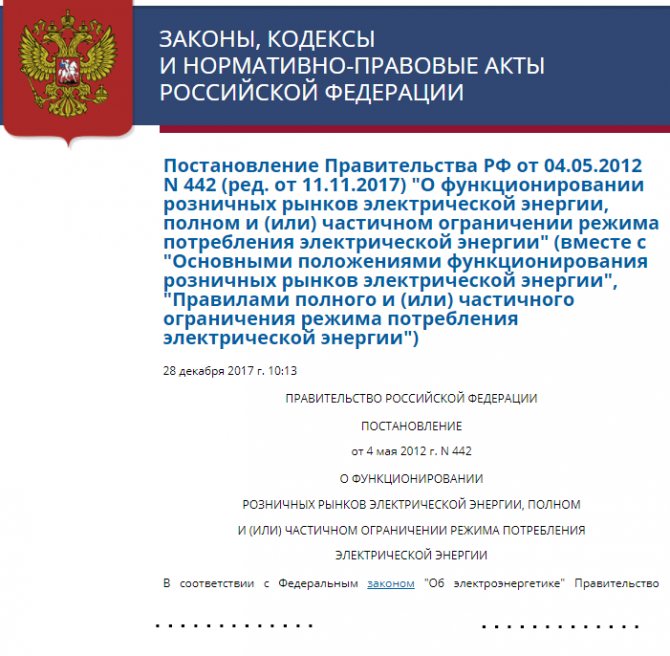
Fragment of the Decree of the Government of the Russian Federation No. 442 of May 04, 2012
Outdated models or those that have been in use for a long time are not subject to replacement, repair or state verification. Replacement is carried out during a period called the inspection interval. The permissible period is 16 years from the date of the last inspection. Another situation is an obvious breakdown of an electrical device. In this case, replacement is made immediately. Documents on the basis of which the process takes place:
- Decree of the Government of the Russian Federation No. 442 dated May 4, 2012 - determines the level of accuracy of instruments, the required indicator is 2.0 and higher;
- The decision of Gosstandart and the letter from Gosenergonadzor dated 2000 dictate the procedure for replacing technical metering devices.
If the residential premises are in the possession of the consumer, replacement of devices at the end of the service life of the electric meter is carried out at his expense.
However, if technical devices are on the balance sheet of the energy supply company or the owner of an apartment building (municipal, state, other property), reinstallation is carried out at their expense. Responsibilities for the maintenance and maintenance of meters are enshrined in the Civil Code of the Russian Federation (Articles 543, 210), as well as in Decree of the Government of the Russian Federation No. 354.
Varieties of this meter and their connection to the network
Two types of the device are available. Features of modifications are determined by the design of the case.
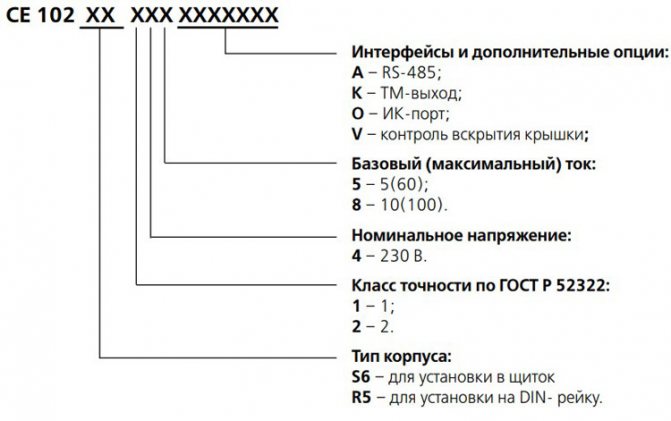
Decoding the marking of CE102 meters
CE102M-S
This model provides the possibility of combined installation.
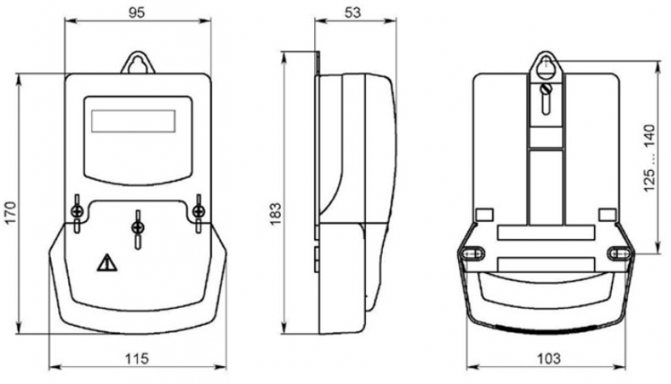
Overall dimensions of meter CE102 S6
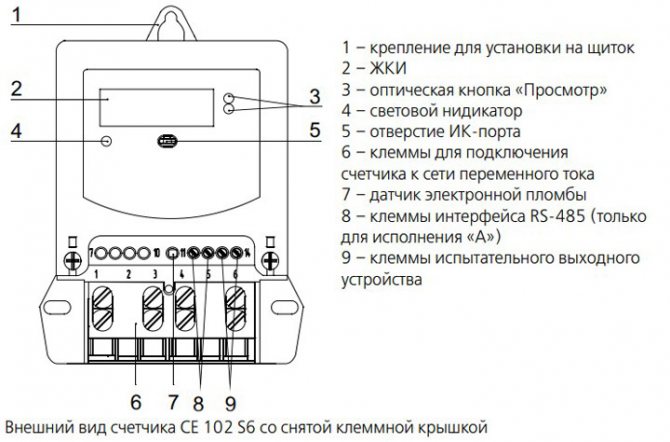
The device is connected depending on the design of the case; switching is carried out according to the following schemes:
We recommend: Smart electricity meter Phobos - description and types of device
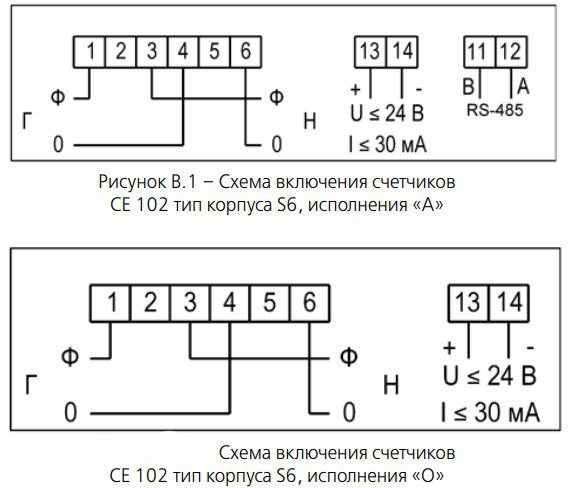
The need to replace old electric meters
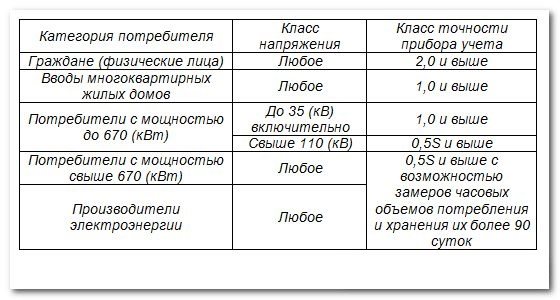
Acceptable accuracy classes of electricity meters
Different standards have been established for enterprises and citizens, which depend on the power of electricity consumed. The service life of an electric meter and the procedure for replacing it differ significantly.
For citizens
In the apartments of many users, classic induction-type devices are still installed - they work properly, and the readings are correct. Doubts arise whether such a device needs to be replaced. An explanation is provided by the Decree of the Government of the Russian Federation: the main thing is that the meter must comply with the accuracy class of such equipment, currently 2.0 or more.
The service life of a conventional electric meter is approximately 25-30 years. Indicated in the technical documentation for the device. If one is not preserved, you should contact the electrical company for clarification or find the model on the Internet and compare the data.
If the service life of the electric meter has not expired and the accuracy class meets the standards, replacement is not required. However, verifications must take place according to the current plan.
For businesses and organizations
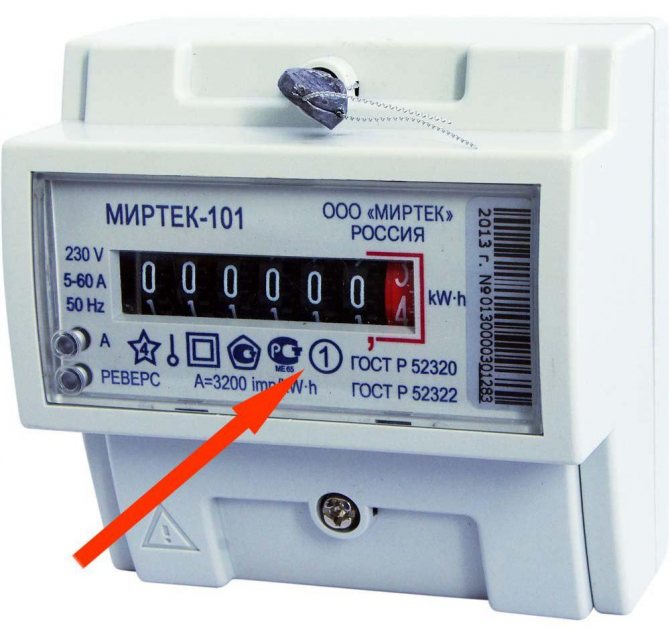
The accuracy class of the electric meter must comply with regulatory requirements
The requirements for large objects are regulated by paragraph 139 of the “Basic provisions for the functioning of retail markets”. In accordance with this regulatory act, the ratio of parameters should be as follows:
- power up to 670 kW – accuracy level 1.0 or more;
- above the specified power limit – 0.5.
An important point is that electric meters for organizations must save hourly readings, the period should be four months (120 days).
Mandatory replacement of electrical devices
In some cases, using loopholes will not work. The law establishes a clear list of devices that are subject to mandatory replacement. First of all, these include the following situations:
- planned replacement of electrical metering devices, which is carried out in connection with updating network requirements or due to other work;
- breakdown, occurrence of malfunctions, failures, incorrect display of indicators;
- replacement is necessary due to the expiration of the electric meter (the specific period is indicated in the technical documents).
The law does not establish requirements for choosing the type of electric meter. You can install and register any type - induction, electronic, hybrid.
Differences between expiration dates and inter-inspection and warranty dates

The deadline for checking the electric meter can be found in your personal account on the energy company’s website
The validity period of the electric meter begins at the moment of sealing. Registration in this situation is carried out automatically by employees of the inspection organization. However, this period does not necessarily coincide with the dates indicated in the technical data sheet.
Typically, the documentation indicates the average shelf life of an electric meter in a house or apartment, which is 25-30 years. This period means that, according to the manufacturer’s assumptions, the device will operate properly during the specified time. In this way, the shelf life of electrical metering devices is calculated and noted.
The passport notes several key dates that affect the timing of meter replacement:
- date the device was put into operation;
- time of the next verification.
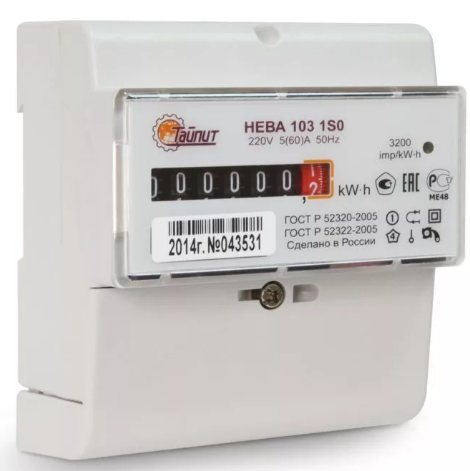
Single-phase, single-tariff electricity meter Taypit Neva 103.5 1S0
The difference between the indicated numbers is the intercheck interval, or MPI for short. Compliance with verification periods is necessary. The nuance is that some breakdowns may appear only after a certain time. These moments cannot be tracked with the naked eye. Moreover, a citizen not involved in electrical engineering will not notice the change. The check interval depends on the model of the electric meter:
- single-phase – 2 years;
- three-phase – 1 year;
- electronic – 4-15 years.
Also, setting the inter-inspection period depends on the nature of the inspection being carried out. Metrological control carries out verification of instruments at intervals of 16 years, technical control is assigned at least once every 6 years. Organizations servicing electrical networks can set separate periods (depending on the work, repairs, updates).
The beginning of the inspection interval is considered to be the date of sealing of the equipment, and not its factory production.
The warranty period is set by the manufacturer. During the specified period, the buyer can receive free repair or replacement. The average duration is 5 years. You need to find out when purchasing, different manufacturers set different time frames.
A technical passport is one of the most important documents. The timing and results of the inspections are indicated here. It also allows you to take advantage of the warranty period.
Service life of a single-tariff and dual-tariff device
Devices can be divided by type. Single-phase devices can be both single-tariff and multi-tariff devices operating from a 220 Watt network.
You might be interested in this Description of loading machines
Single-rate devices are more practical and calculate the energy consumed at a common rate. And multi-tariff devices are more difficult. They calculate energy depending on the time of day.
Three-phase devices are those that can operate from a network of 220 and 380 V. Such electricity metering devices are mainly multi-tariff and are more often used in industry or in homes where the connection is made using two types of voltage. The warranty period for operation of single-phase metering devices in different premises is described below.
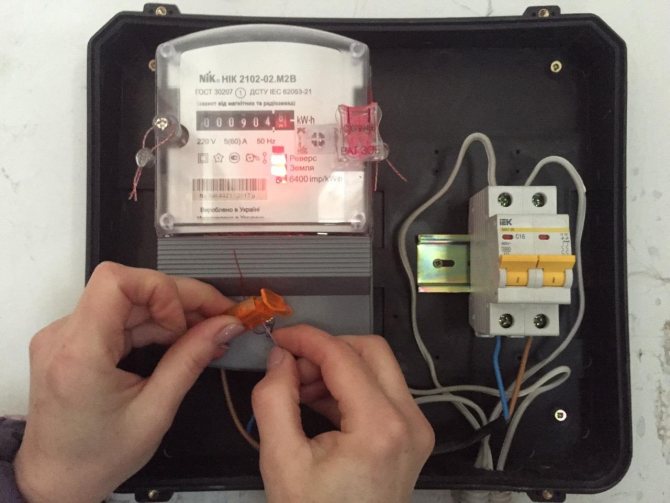
Sealing the device
In apartments It is necessary to replace electricity meters in apartment buildings in the following cases:
- meter malfunction;
- the expiration date has expired;
- did not pass the intercheck interval;
- personal preference to change the meter.
Apartments must be equipped with meters with an accuracy class of 0.5 to 1. If the model does not correspond to this, then it must be replaced with an electronic one. Further, devices are replaced at intervals of 16 years.
In a private house
Residents of private houses are also interested in when it is necessary to replace the old meter with a new one. This depends on the service life and shelf life of the device itself.
Basically, in private homes the power consumption of appliances is higher. This is due to the fact that you also need to count the energy consumed, where a large number of powerful devices are connected (heating boilers, boilers, lighting groups, and so on).
Therefore, in private homes, meters fail earlier. The inspection interval should be carried out every 6 years and the device should be checked for defects.
In a non-privatized apartment
People who live under a social tenancy agreement do not have to buy an energy meter and pay for its installation. In this case, it does not matter where the meter itself is located, on the staircase or indoors.
If you need to replace the device, then write a statement to the management company. In the application you must write the reasons for replacing the device, as well as indicate the installation date and test interval. If there is a document indicating that the meter is faulty, it must be attached.
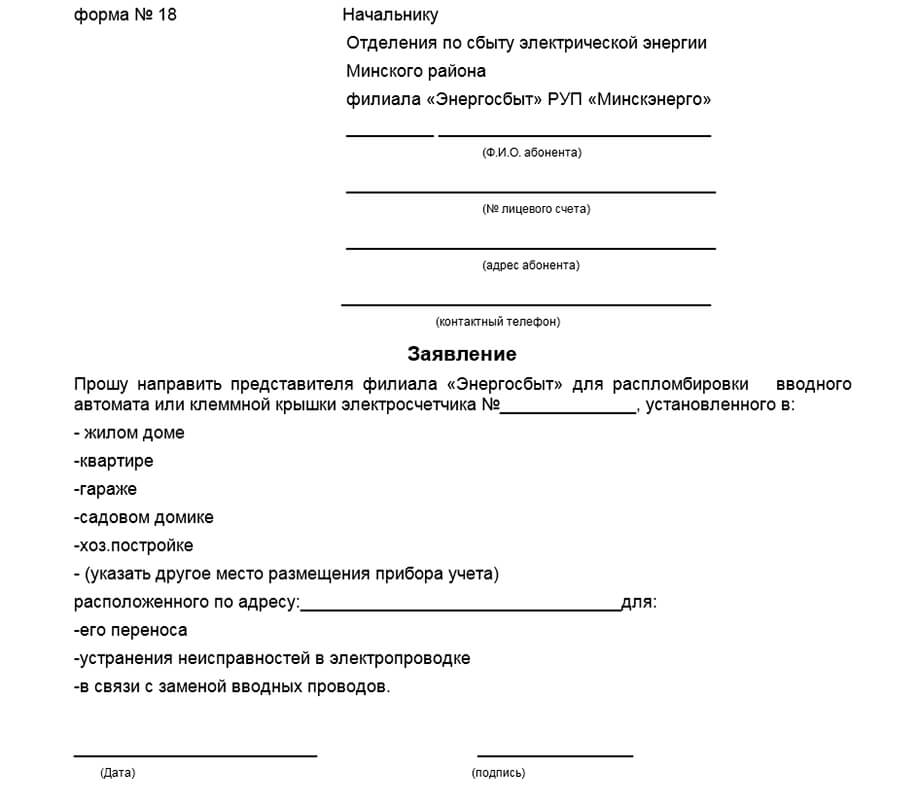
Sample application for device replacement
Procedure for checking an electric meter
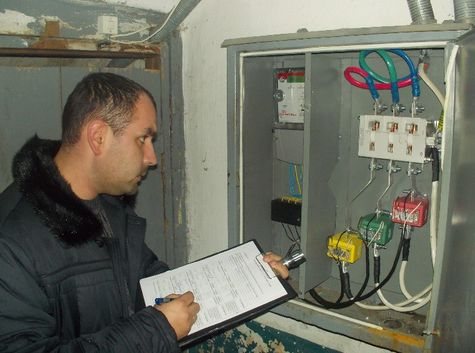
Electricity meters are checked to assess serviceability and identify signs of external influence
Electricity consumption metering devices are checked by specialists specially authorized by the relevant organizations. The devices are verified for errors when recording readings:
- at the time of production - primary;
- at the end of the inter-check intervals, the data of the electric meter and control devices are compared - periodic;
- in case of emergency situations (loss or breakage of a seal, loss of the technical passport of the device, doubts about the correctness of the readings, etc.) - extraordinary.
Companies whose employees have the right to inspection and sealing are classified as energy sales or metrology companies. It can be difficult to decide on the latter - find out the organization responsible for the site, contact, negotiate. However, the services of such companies are usually cheaper than a full-time electrician.
The process does not require dismantling the equipment; verification is carried out at the location of the device. Employees carry out work using special measuring devices - an ohmmeter, a wattmeter, which are alternately connected to the meter contacts in several modes. In addition to the correctness of the readings given, the sensitivity of the terminals, the serviceability of the housing and the examination of the appearance of the product are checked.
If, based on the results of the test, it turns out that the current device gives readings with an error, it is recommended to replace the electric meter with a new one. Repairing such equipment is expensive, and faulty technicians do not seal it.
When does the warranty period on the meter begin to expire?
The period begins to run at the moment the meter is handed over to the consumer, but a different beginning of the period may be determined in the purchase and sale agreement. if the day of delivery cannot be determined, these periods are calculated from the date of manufacture of the goods.
Important! It is not profitable to calculate the period from the date of manufacture of the meter! The product may be stored in a warehouse for a long time; in this case, it is better to check with the seller for the exact date of sale and calculate the warranty period from this date.
Accept claims and get free legal advice today!
Call: Moscow St. Petersburg +7 812 467-37-84Hotline in the Russian Federation 8 800 350-83-09 (free)
Solve the problem now - a correct and justified complaint is the key to success!
Moreover, if the buyer cannot use the product due to circumstances depending on the seller, the warranty period is suspended until the relevant circumstances are eliminated.
Electric meter service life
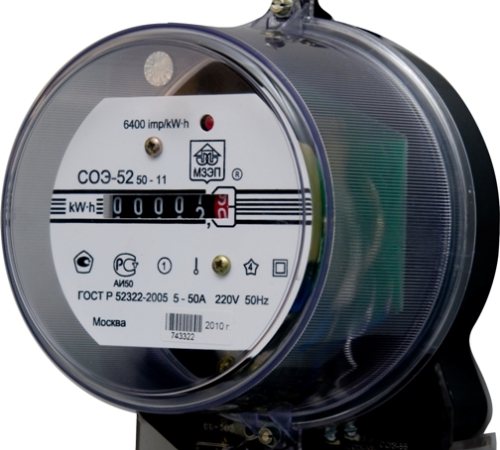
Induction electricity meter
The most common types of reading devices are inductive and electronic. Masters do not recommend using hybrid ones. Due to different designs, the periods and requirements differ, after how many years it is necessary to change installed electricity meters.
Induction (mechanical)
The operating principle of this type of metering device is the use of electromagnetic induction. Inside there is a coil through which an electric current passes and creates a magnetic field, which, in turn, causes the disk with fixed numbers to move. Accordingly, the greater the flow of electrons passing through the coil, the faster the disk rotates and the numbers move. This device has been used to calculate electricity since the end of the 19th century, but has not lost its relevance and efficiency.
The shelf life of induction-type apartment devices is 30 years, which is due to the design and strength of the materials.
Electronic
Electronic electricity meter
Modern meters show a higher accuracy class, which means recording data with minimal error. The main difference of the design is the absence of moving elements. In theory, this feature should increase the service life of the device. But it has not yet been possible to test this condition in practice - electronic meters began to be installed relatively recently.
The service life declared by the designers is 25-30 years. However, the data is still being clarified.



